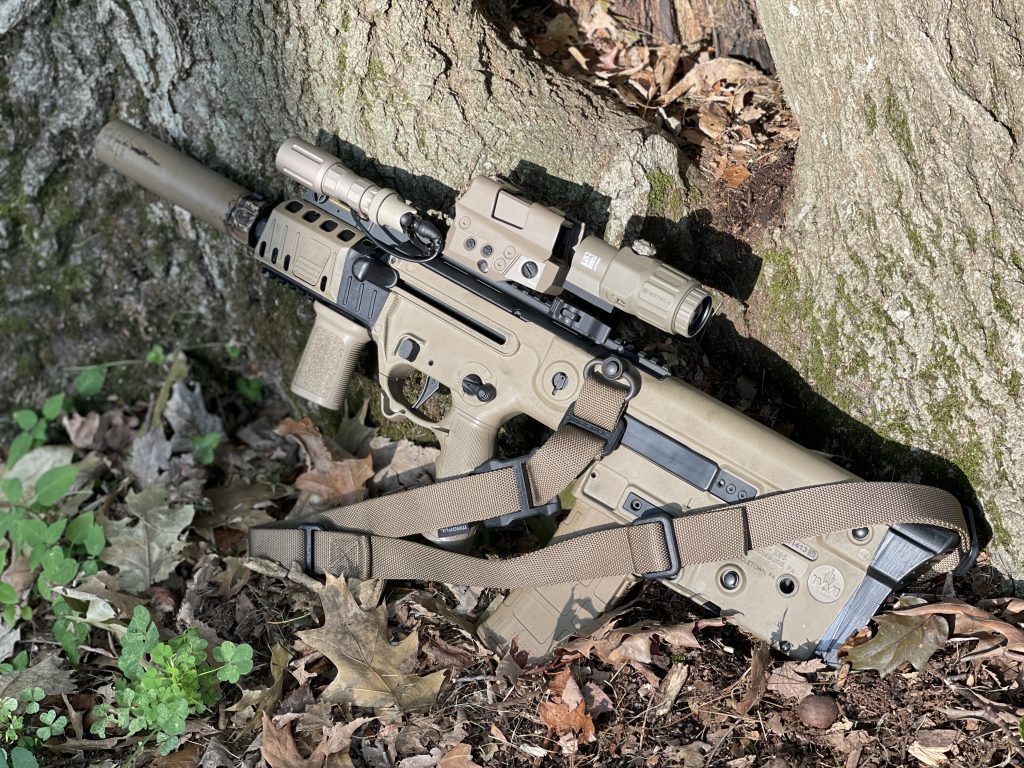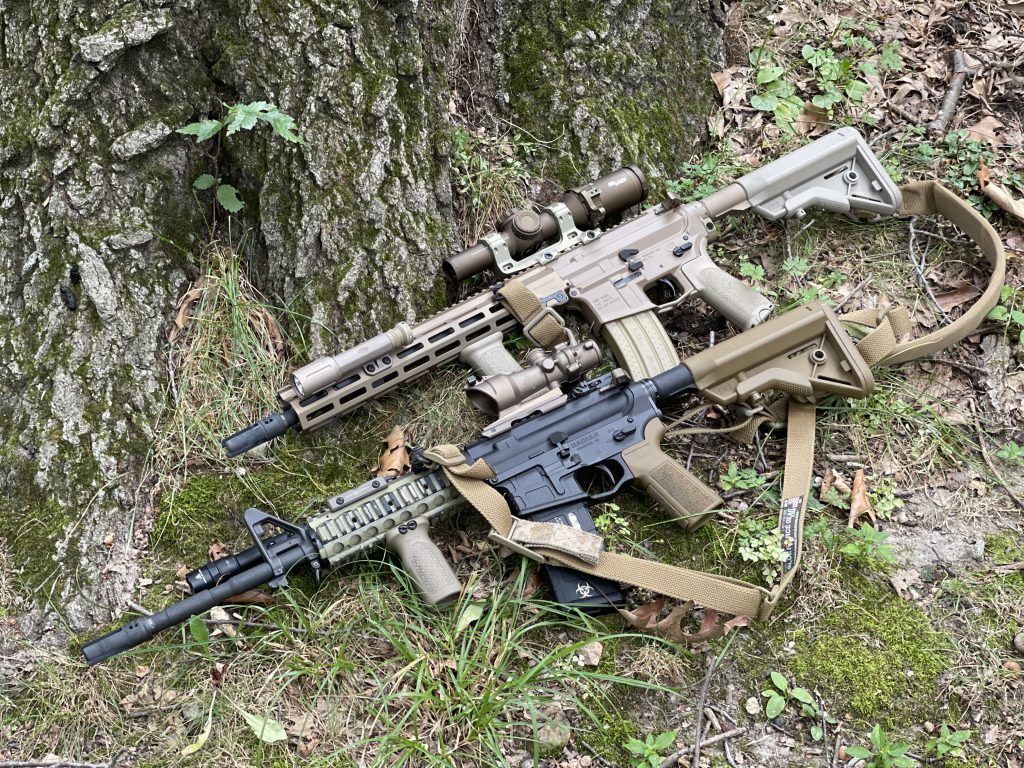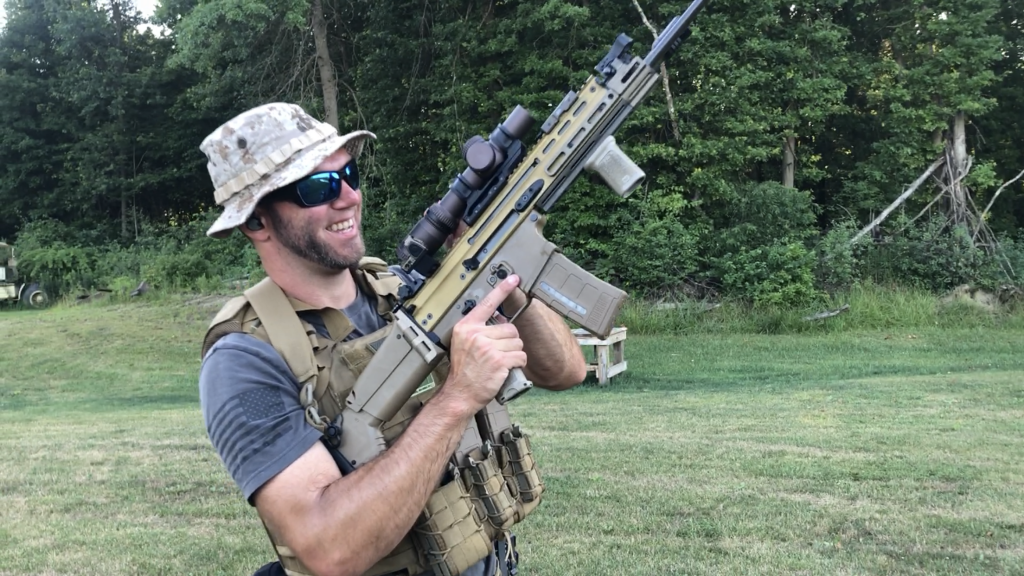If you’re asking what barrel length you should get on a carbine there needs to be some additional context to get good answers. The 9-Hole crew has a good, and mercifully short, video on some general principles of barrel length selection.
These context defining questions are often.
- What do you want it to do?
- What do you need it to do?
- What do you already have?
What do you want it to do?

Your rifle. Your role. This question is actually a question series, it encompasses everything from your budget to comforts to legal conformities for your region.
Example, if the NFA were not in existence the most popular and common barrel length of AR-15 would likely be 14.5″ instead of 16″ in length. Why? GWOT. The M4 was and is our carbine.
Transfering intent to the home we usually want our AR to do what the M4 did. Be a simple and efficient general purpose carbine. It has reach but is easier to move with than the M16/20″ guns and can cover down on things well. Ammunition, following the M4, is also built with that barrel and has system in mind.
But you may have a requirement or a legal parameters, like the NFA existing, that changes all the calculus. Thus the 16 inch barrel became the commercial standard, it was the closest and most convenient thing to the M4. It also came with a few ballistic benefits in good rifles with a little more speed and and little more legs. The M27 uses a 16″ barrel by design and the Marines aren’t under a requirement to do so, it is the most accurate of the three service weapons.
So sketch out your ideal within all the parameters present and narrow down the field. This will also quickly track you into buy or build. I recommend buy. Building is fun, but a professional company making serious firearms for serious purposes can back their gun better than your buddy’s basement build.
What do you need it to do?

Need is the emphatic series of questions that trims the wants. If you can’t get the list that you want, what do you need? This will lean heavier into the legal side of things too. Do you need it to be a Title I gun? Do you need it to be legally a handgun? Do you need to use a certain optic or ammunition type? What fits your budget?
Use those needs and start picking apart your wants. You might get it all. You might get some. You might determine that one of your ideals are too problematic due to legalities (wanting a 12.5 SBR for example) and instead go with a 13.7 and a specific muzzle to meet Title I requirements.
That all brings it back to the 14.5/16 permanent length guns, they are usually perfectly adequate to the needs list. If they are not, then don’t pick one for convenience.
I’m a 14.5 advocate, supremacist one even might say, as the most mobile and do it all barrel length for the least hassle. The most inconvenient part is selecting a “permanent” muzzle device. Not that much of a hassle and permanent only in the legal sense for NFA purposes.
What do you already have?

By extension of this question we are hitting back on the first one too. What do you want and why does this new rifle do that better than anything you currently have?
If you, like many of us, have already acquired a 16″ of some sort as a baseline rifle your options expand. You’ve put an adequate optic suite on and it does what you ask it to, so the next rifle can be far more specialized without compromise. You can get an SBR for compactness or you can get an SPR for precision and distance. You can clone and update the capabilities of your current rifle with the new one and have redundancy. You can try some more out there items like triggers, optics, non-standard controls, and the like without worrying about compromising the reliability of your base rifle. You can get a test bed or a specialist. You can get both.
You can also use this as an A/B test to see if upgrading the current rifle makes more sense than acquiring a 2nd.
In all instances it will condense down to getting what you want out of the gun and its accessories. But when buying for efficiency more than for fun the conversation must look at the efficiency pain points. Those points are, assuming a rifle of acceptable quality from literally anyone, not likely to be in the gun itself.
So ask the questions. Get the answer. Buy accordingly. Don’t overthink it.
Also, you don’t need it chrome lined, you don’t need it cold hammer forged, you don’t need 1:7 twist. It just needs to be quality nitride or stainless steel with a good rifling cut and those are hallmarks of CHF CL barrels.



